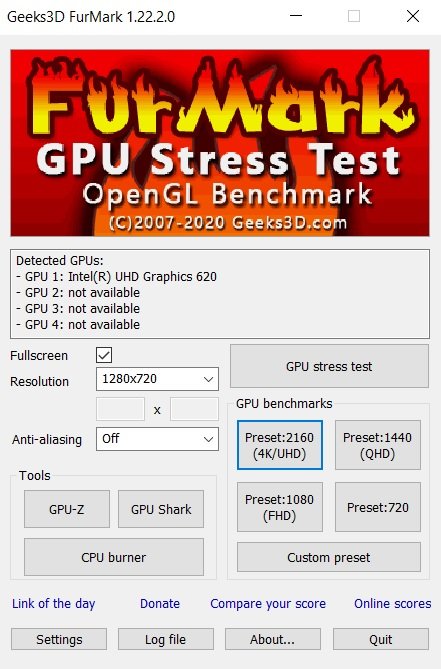What is a GPU (Graphics Processing Unit)
Ever wonder how the images or videos you see on your computer are processed? It is made possible with the help of a graphics card. Also known as a video card or a display card, a graphics card receives electronic signals from the CPU and translates them into images compatible with one’s monitor. At the heart of it is a GPU (Graphics Processing Unit), which is responsible for all the major computations and what is omnipresent in all computers. Graphics cards are needed for computers that are put through intensive usage for long hours at a stretch, such as gaming, engineering, data analysis, etc. Since most people use their computers for every elementary task, the GPU pre-installed in their motherboard or CPU does the job just fine for them, and rightly so. But it is important for those who do have a dedicated graphics card installed to identify the limits you can stretch it out to. This is where a stress test comes into play.
Furmark – GPU Stress Test Tool
A stress test is an application that allows you to push your GPU to a point so far that it may run the risk of crashing. This allows the maximum utilization of a device’s computing powers; processing the most complicated data while trying to make the temperature reach through the roof. The purpose of a stress test is to identify just the point to which your GPU can run without crashing. A stress test helps ensure that no harm is caused during the normal, day-to-day usage of a GPU. now, if you do want to put your GPU through one such stress test, my recommendation would be Furmark. Furmark is a lightweight, easy-to-use GPU stress test that has been the standard choice for the past 5 years. It is perfectly understandable for a person not to opt for one since a stress test runs a high chance of crashing your computer’s hardware, Furmark allows you to monitor your video card’s performance in a controlled environment.
How to use Furmark?
The first thing you need to do is close everything else you have open on your computer, because that may hinder Furmark’s sound judgment of your GPU’s performance. In case you want to test all the graphics cards you have installed on your computer, you can tick on the Fullscreen box, otherwise, the windowed mode will only render results for your primary graphics card (in this case the Intel UHD Graphics 620). You can choose the resolution setting to match your monitor’s. Go to the settings to add some 3D options to the test. Herein also lies the GPU Temperature Alarm, which can be set to one’s preference too. In the Anti-aliasing dropdown, you can choose how intensive you want the stress test to be; 2XMSAA being the least and 8XMSAA being the most. After configuring the test to your liking, proceed with the GPU Stress Test button. You don’t have to sit through the entire test, but it is advisable to let it run for 30 minutes or so. Your computer’s fans would be more noisy than usual, for obvious reasons. Bear in mind that each ‘fur’ of the animation that appears on the screen during the test is rendered individually. After a while, you will be shown the result of your graphics card’s prowess. You can download Furmark from here.
Is Furmark safe?
It’s fair for people to have their concerns about Furmark. You might find yourself wondering if putting your GPU through this is worth it since most people don’t use their computers to the extent that would render damage to its internals. But using Furmark under secure protocols is absolutely harmless. If Furmark crashes during the test, your graphics card might have overclocked, rising the temperature of your GPU high enough to cause damage to it. Other reasons can be incompatible cooling conditions, or your graphics card just being too old for one of these tests. If you are able to run this test for 30 minutes without crashing, chances are, your GPU is good enough to handle any high-end game or professional software you could throw at it. Read next: How to check the GPU Temperature in Windows.
